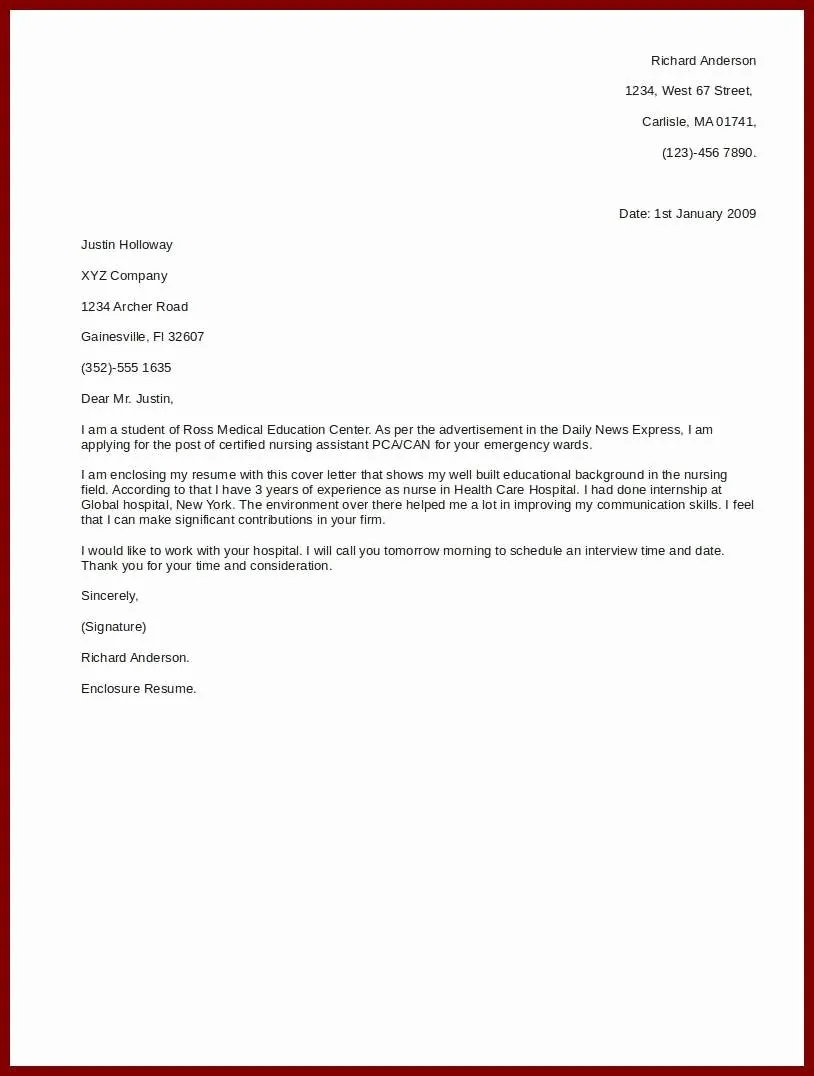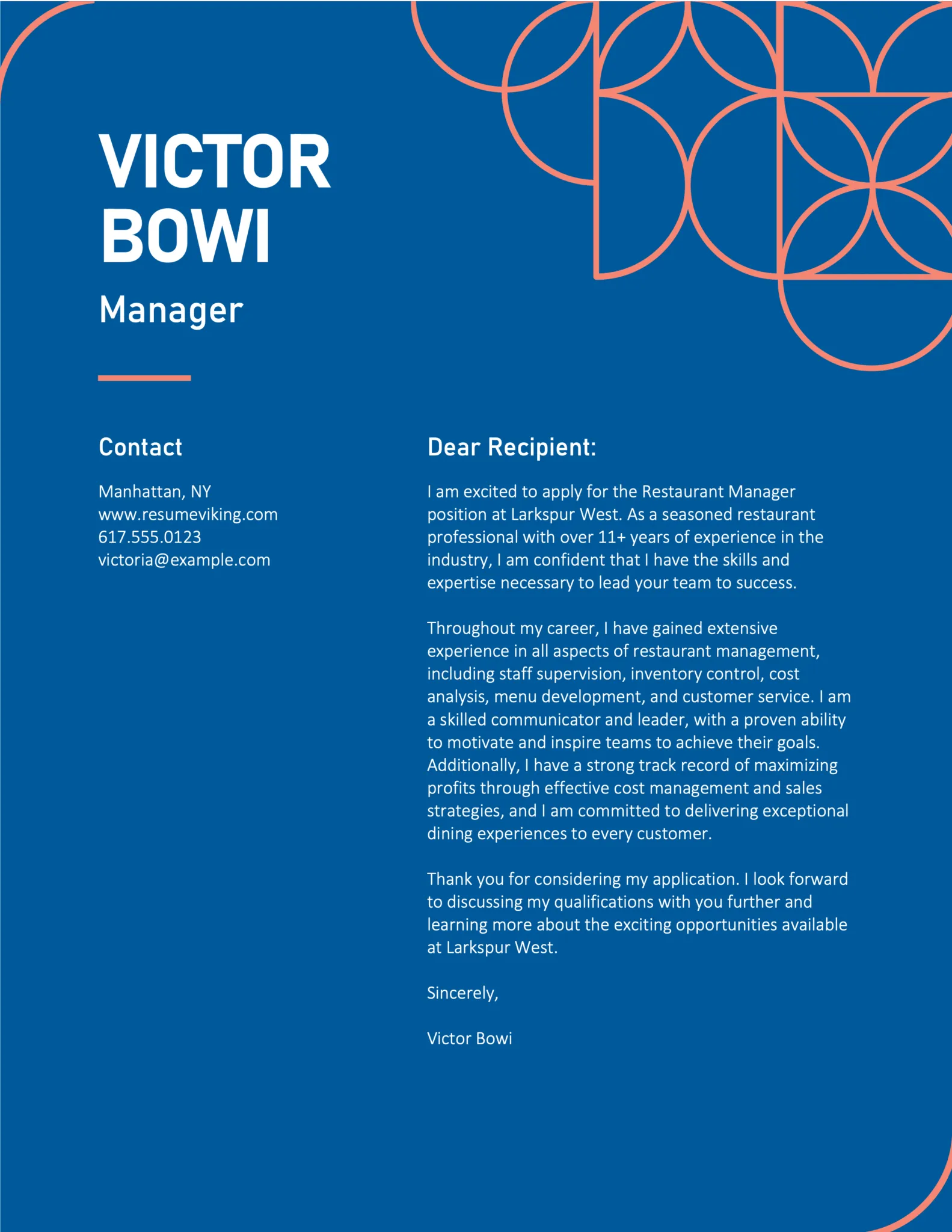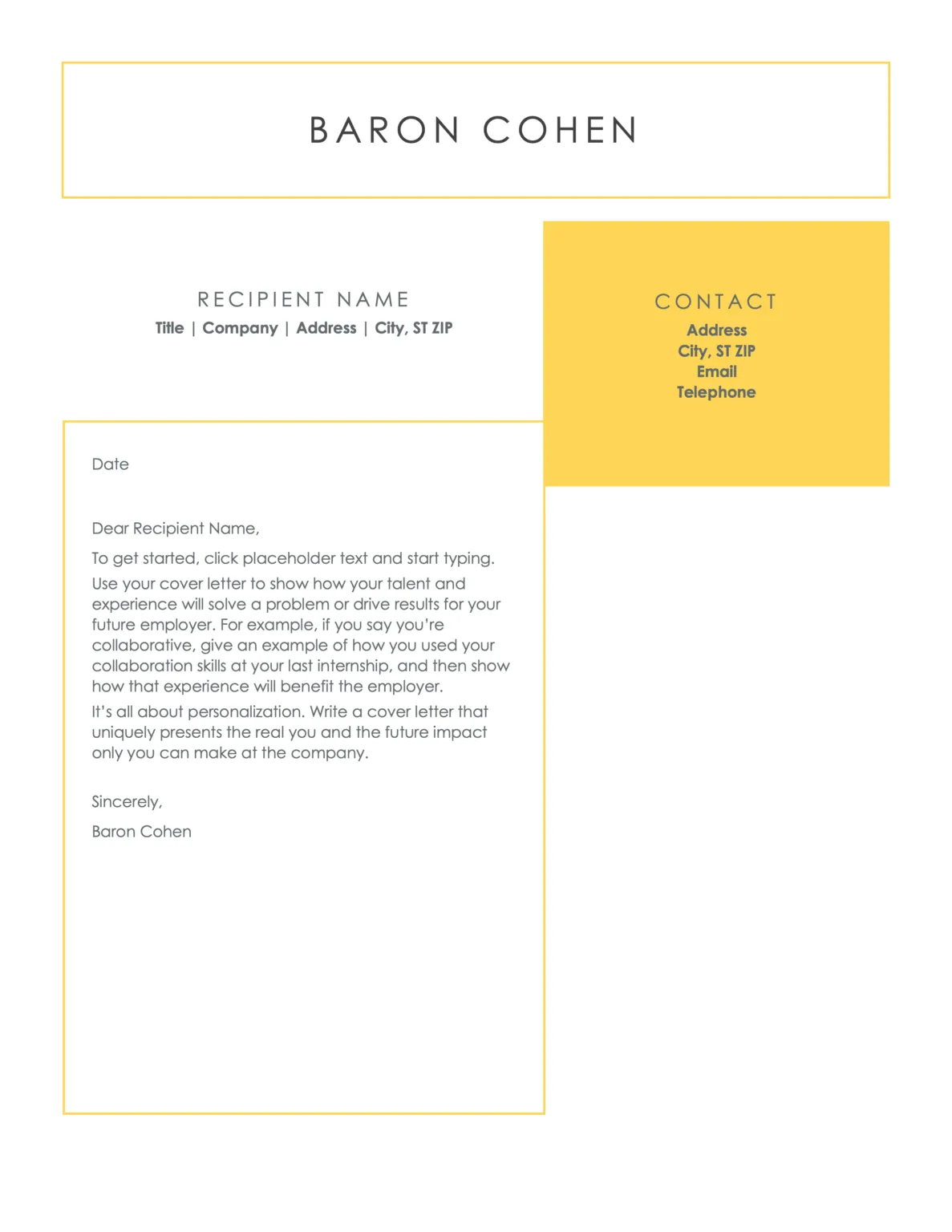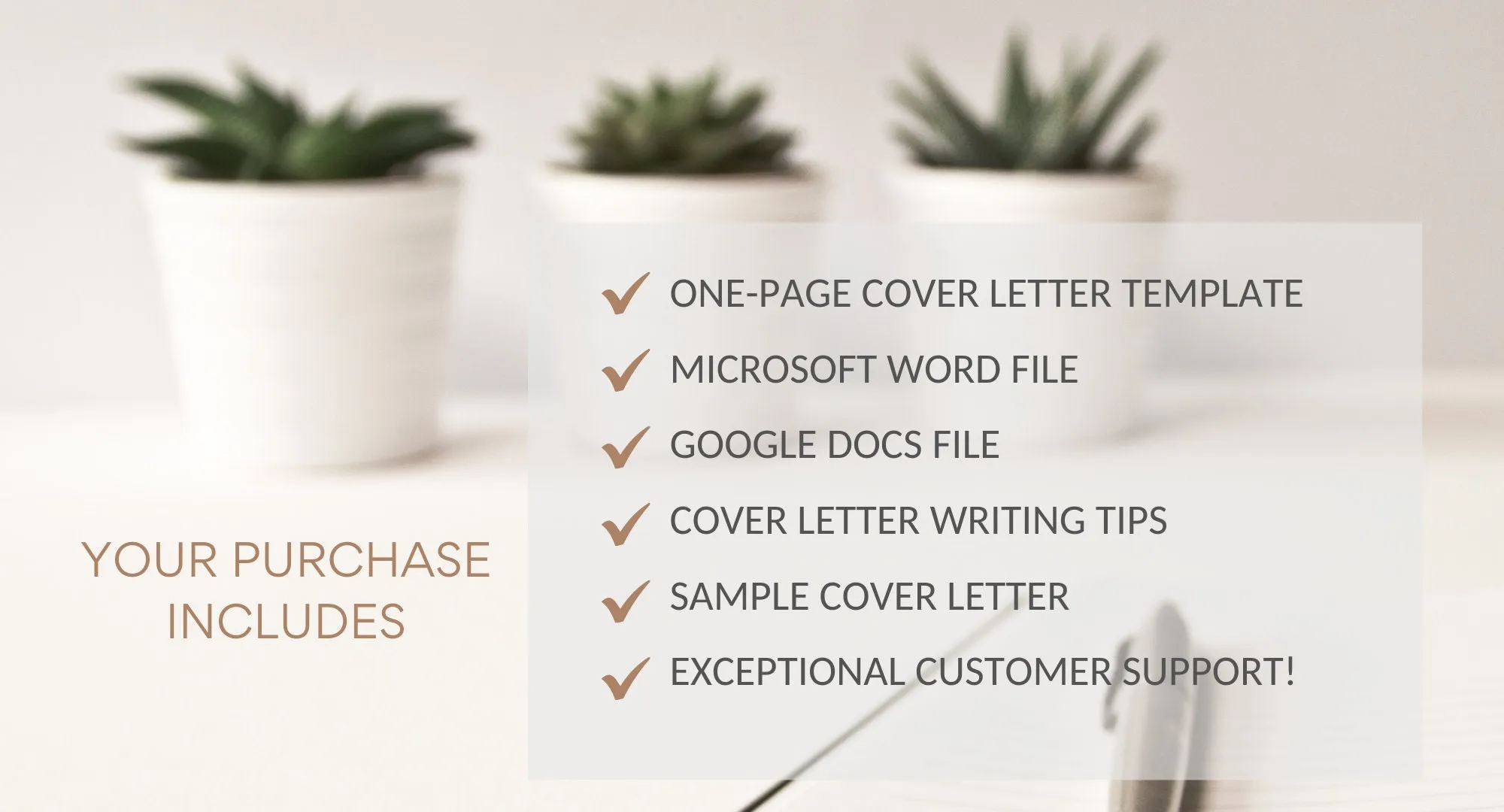Why a Cover Letter is Crucial for Your Application
In the competitive landscape of job applications, a cover letter serves as your first impression, an opportunity to captivate a potential employer and distinguish yourself from other candidates. A well-crafted cover letter complements your resume, providing context, personality, and a glimpse into your motivations for seeking the role. It allows you to express your enthusiasm for the position and the company, showcasing your understanding of their needs and how your skills and experience align with them. Without a cover letter, you risk being perceived as just another applicant. A cover letter helps you to create a narrative, to demonstrate how your previous experiences have prepared you to meet the challenges of the new role, creating a deeper connection with the hiring manager. Ultimately, a strong cover letter significantly increases your chances of securing an interview, bridging the gap between application and opportunity.
Highlighting Your Skills and Experience
Your cover letter is your chance to shine a spotlight on the skills and experiences that make you the perfect fit for the job. Instead of merely listing your qualifications, use the cover letter to demonstrate how you have applied those skills in real-world situations. Provide concrete examples that illustrate your achievements and quantify your impact whenever possible. For instance, if you mention project management skills, describe a project where you successfully led a team, outlining your responsibilities, the challenges you overcame, and the positive outcomes achieved. If the job description emphasizes specific skills, make sure to highlight your proficiency in those areas, showing the employer that you understand their requirements. By tailoring your examples to the specific needs of the role and the company, you demonstrate that you are not just qualified but also a proactive, results-oriented individual who can make a significant contribution.
Tailoring Your Letter to the Job

A generic cover letter is a surefire way to end up in the rejection pile. Instead, personalize each letter to the specific job and company. This involves careful research and a thoughtful consideration of what the employer is looking for. Start by thoroughly reviewing the job description, identifying the key requirements, and the preferred qualifications. Then, structure your cover letter to directly address those needs, aligning your skills and experience with the job requirements. Avoid generic phrases and instead, use the language of the job description to demonstrate your understanding of the role and your ability to perform the job duties. Show the hiring manager that you have taken the time to understand their needs and that you are genuinely interested in the opportunity.
Researching the Company and Its Culture
Before you start writing, do your research. Learn about the company’s mission, values, and recent achievements. Explore their website, social media profiles, and any news articles or press releases about the company. Use this information to tailor your cover letter. Demonstrate your understanding of the company’s goals and demonstrate how your skills and experiences can help them succeed. Addressing the company’s values in your letter makes you stand out. Mentioning specific projects or initiatives that the company is involved in shows you are engaged. It also proves that you see yourself as a good fit for their corporate culture. This approach shows initiative and a genuine interest in the opportunity.
Matching Your Skills to Job Requirements
Carefully compare your skills and experience to the job requirements. Identify the key skills and qualifications that the employer is seeking and highlight those in your cover letter. Use specific examples to illustrate how you have demonstrated those skills in the past. For instance, if the job description requires strong communication skills, describe situations where you effectively communicated with colleagues, clients, or stakeholders. When possible, quantify your achievements. Demonstrate that you have the skills and abilities necessary to perform the job successfully. By aligning your cover letter with the job requirements, you demonstrate that you are a strong candidate who is likely to perform well in the role.
Structuring Your Cover Letter for Impact

A well-structured cover letter is easy to read and allows the hiring manager to quickly grasp your qualifications and interest. Use a clear and logical format, with distinct paragraphs that address key points. Keep the tone professional and avoid overly casual language. Remember that the goal is to get the reader’s attention, so make every word count.
The Opening Paragraph
The opening paragraph is your chance to grab the hiring manager’s attention. Start with a strong statement of purpose, clearly stating the position you are applying for and where you found the job posting. You might also mention a mutual connection or express your enthusiasm for the company. Keep it concise and focused. A well-crafted opening paragraph should immediately capture the reader’s interest and compel them to continue reading. Keep the introduction brief, no more than three or four sentences. It should concisely state your reason for writing, the position you are seeking, and the source of the job posting.
Creating a Strong Middle Section
This is where you showcase your skills and experience, demonstrating how they align with the job requirements. Focus on your relevant achievements, and provide specific examples that highlight your accomplishments. Back up your claims with data, whenever possible, to quantify your results. Use a professional tone and language, and keep the paragraphs concise and easy to read. The middle section should demonstrate your value to the company. This is where you bring your experience and skills to life. It’s essential to make your letter compelling and prove that you are the best fit for the job.
The Closing Paragraph

The closing paragraph should reiterate your interest in the position and thank the hiring manager for their time and consideration. Express your enthusiasm for the opportunity and state your willingness to discuss your qualifications in more detail. Include a call to action, such as an invitation for an interview. End with a professional closing, such as “Sincerely” or “Best regards,” followed by your name. Keep it brief, leaving the hiring manager with a positive final impression. Make sure your contact information is included, so the hiring manager can easily reach you. A confident and professional closing leaves the reader with a favorable impression.
Proofreading and Formatting Your Cover Letter
Before submitting your cover letter, meticulously proofread it for any grammatical errors, spelling mistakes, or typos. A well-written cover letter is a reflection of your attention to detail and professionalism. Use a clean and consistent format, with a clear font, proper spacing, and margins. Make sure your contact information is easy to find, and that it matches the information on your resume. Consider having a friend or career counselor review your cover letter before sending it. A fresh pair of eyes can catch mistakes that you may have overlooked.
Common Cover Letter Mistakes to Avoid
Avoid these common mistakes to increase your chances of success. Do not use generic, mass-produced cover letters, because the hiring manager will immediately know it is not specifically for them. Do not simply repeat information from your resume. The cover letter should expand upon your qualifications and give them context. Do not exceed one page in length, as hiring managers often have limited time. Avoid using overly casual language. Do not include negative information about previous employers. Do not forget to proofread. A poorly written cover letter can damage your chances.
Formatting for Readability

A well-formatted cover letter is easy to read and makes a positive impression. Use a professional font, such as Times New Roman or Arial, in a legible size. Ensure that the spacing is consistent throughout the document, with a clear separation between paragraphs. Use left alignment, and avoid justified text. Use bullet points or numbered lists to highlight key achievements or skills. This helps the hiring manager quickly scan the letter. A clean format makes it easy for the hiring manager to read and quickly identify the information they need. Ensure your formatting is also consistent with your resume, creating a cohesive professional presentation.
Using Action Verbs
Incorporate strong action verbs to describe your accomplishments and skills. Action verbs make your cover letter more dynamic and engaging. Use verbs to demonstrate what you did and what results you achieved. For example, instead of saying “Responsible for project management,” say “Managed a team of five to successfully deliver the project on time and under budget.” Other action verbs include “achieved,” “created,” “developed,” “implemented,” and “led.” By using action verbs, you can create a compelling narrative that showcases your value to the employer. Action verbs not only make the text more readable, but they also provide a vivid picture of your abilities and successes.
